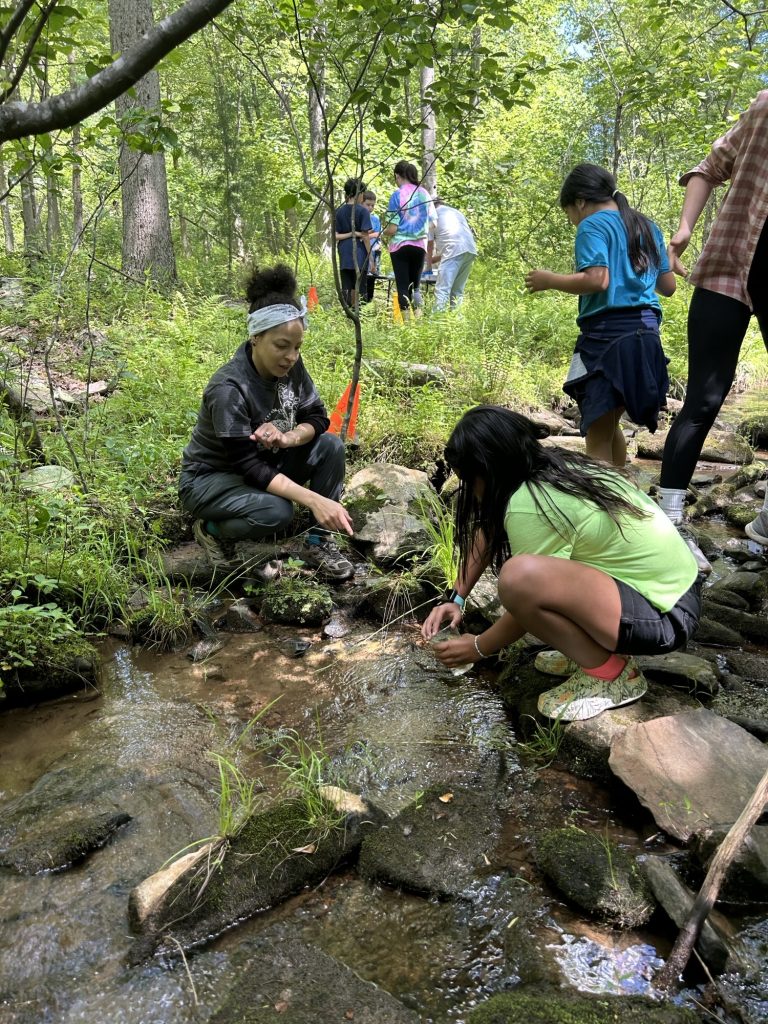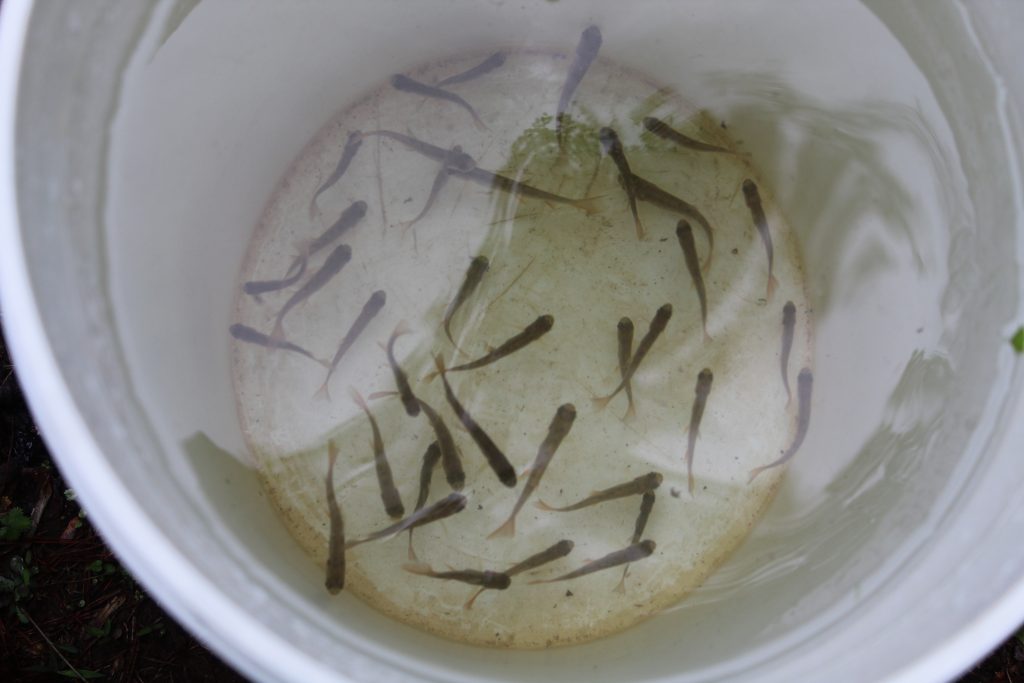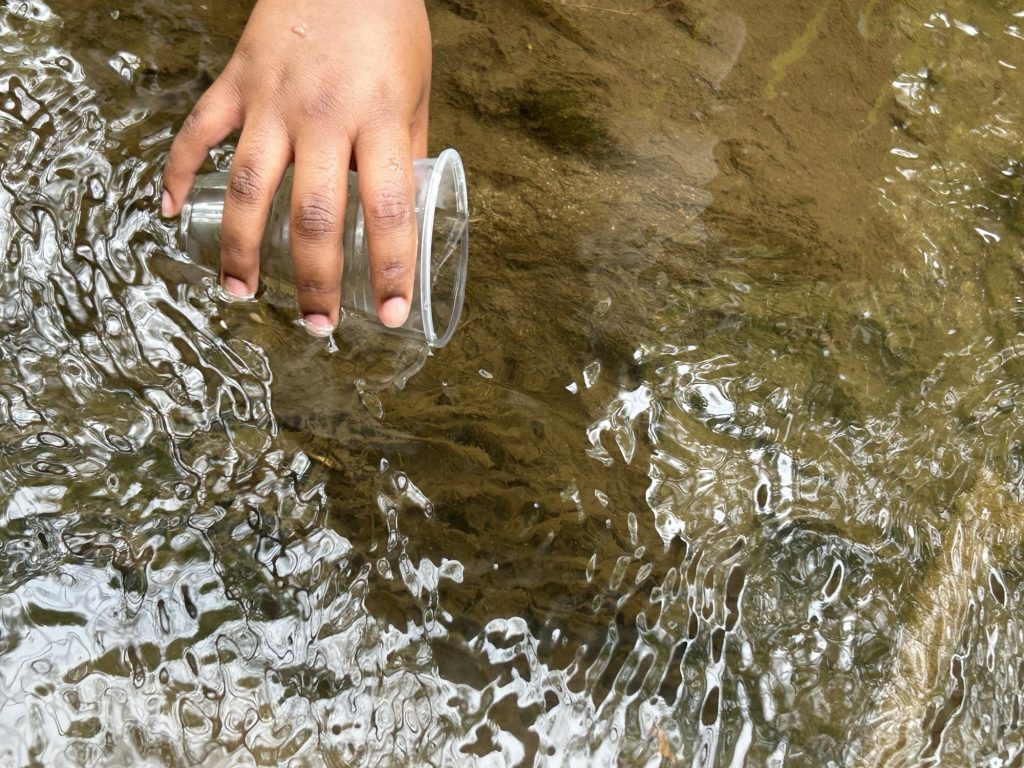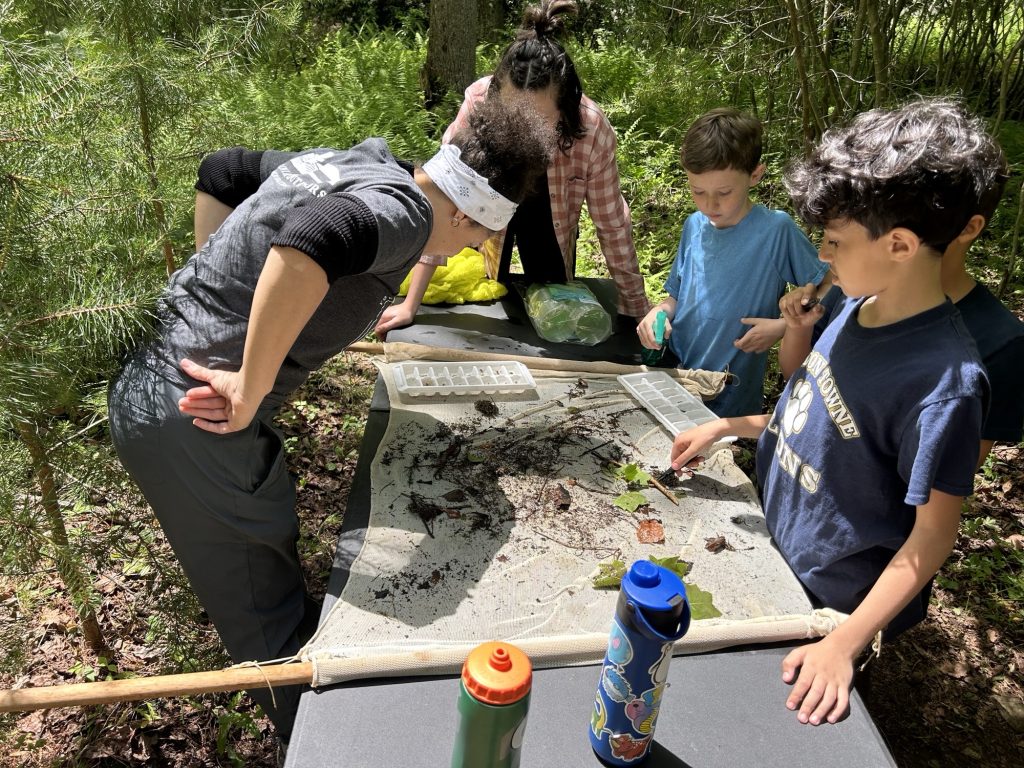Trout in the Classroom are Released into the Catharpin at Jackson Hollow

Since 2016, the Virginia Outdoors Foundation has welcomed a consortium of participating trout-in-the-classroom students from Northern Virginia to the Bull Run Mountains Natural Area Preserve to release Brook trout (Salvelinus fontinalis) into the headwaters of Catharpin Creek.
The preserve at Bull Run Mountains isn’t the only place the presence of brook trout is important. This restoration project has far-reaching implications as it also helps to restore and improve the overall Chesapeake Bay headwater, river, and tributary system by balancing interplaying systems. The health of the Chesapeake Bay relies on a balanced ecosystem, and often times this starts in its headwaters, some of which are found in the Bull Run Mountains.

Throughout the school year, students care for brook eggs and new hatchlings, or alevins, as they’re called in designated classrooms. Calibrating the water temperature inside the classroom tanks to sit between a steady 40 to 46 degrees, students have to ensure their classroom’s brook trout eggs survive. In addition, students’ and teachers’ tasks include removing eggs that might have developed white spots—a fungus highly contagious to other vulnerable trout eggs. Once hatched, feeding the alevins up to three times per day is paramount. Generally speaking, February tends to be the month trout eggs hatch; their age is measured from their birthdays.
On the day of the release, students arrive at the Jackson Hollow section of the Bull Run Mountains Area Preserve. Their enthusiasm oscillates between rapid fire questions about the biodiversity of the preserve and sharing their trepidation about bears, mosquitoes, and poison ivy. Their energy and excitement are poised, ready to handle it all and take on anything!
With a quarter-mile walk from the parking area to the release site, these cold-water fish are often transported in climate-controlled coolers with ice and an oxygenating aquarium “bubbler.” Now ready to be introduced to their new home, the instructions at the release site are simple:
Once the water is gradually added to the transportation container to minimize potential shock from the differences in water conditions, students begin scooping their fish into a cup, walk it down to the stream’s edge, position the cup to be flush with the stream’s surface, then gently release by tipping the cup even more until the trout swims out naturally on its own. Releasing the fish in small clear plastic cups allows the students to connect with their fish one last time before being released, while allowing VOF staff to get an accurate count and estimated measurements of released trout.

The students’ attention doesn’t stop there, as they most excitedly hurry along the bank to watch their released fish take to their new habitat. After the release, students enjoy a nature journaling session. Identifying aquatic macroinvertebrates are critical additions to their journal observations, getting to know the new menu items of their classroom trout. Staff facilitate this activity by skimming the waters of the stream to temporarily capture these organisms for purposes of observation. From there, laying the kick net on a prepared table allows students to gently remove the macroinvertebrate with tweezers, transfer them to ice cube trays filled with their native water, and identify each species. Short nature walks with VOF staff round out the students’ trout release experience as they bridge their newly acquired knowledge, understanding how their trout and their waters depend on the land ecology and vice versa.
A special thank you to the teachers and students who continue to make this program an ongoing success and make experiential learning a part of their curriculum! We hope to see you next year, same place, same fantastic citizen science work! It is wonderful to witness our youth strengthening their ties to our natural world, ensuring its health.
